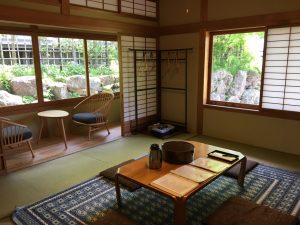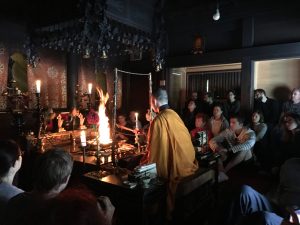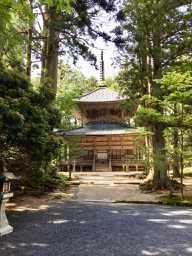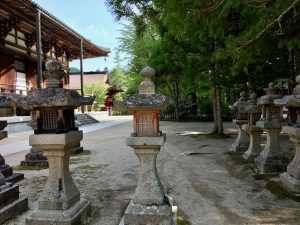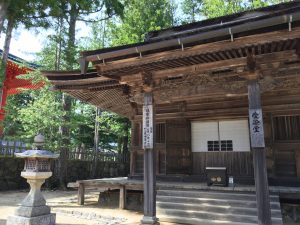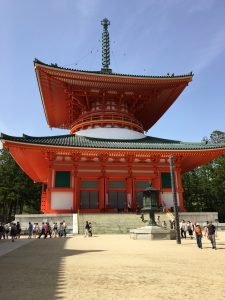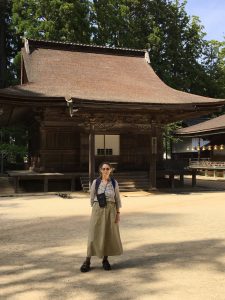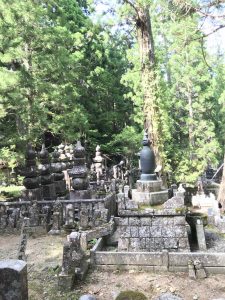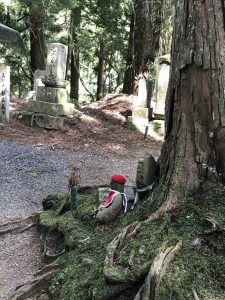Up out of the urban sprawl that is Osaka, we begin to climb into the cool hills on our 4 hour and 4 transfer train journey to Koyasan, the Buddhist center of Shingon Buddhism. Once home to 1000 monasteries, now only about a 100 remain, and those have all turned from the sacred to the commercial, converting their ancient monastery sites to bed and breakfasts for the throngs of tourists who come to visit.
We stay in a beautiful new annex at the Eko-in monastery with traditional tatami mat floors with futons put down for us by bedtime and meals served in Buddhist vegetarian style in our private large spacious tatami-room.
We attend a meditation class in the afternoon and the ritual morning fire ritual in the morning. I suddenly realize one of the influential origins of the outdoor fire ceremonies which my Buddhist teacher in the past, C.M. Chen, often conducted, a fusion of his Chinese background (from which this Japanese Shingon sect developed) and his Tibetan Buddhist training. There are only about a dozen monks still living and training here as the numbers of religious practitioners have greatly decreased and young men now choose other options.
Walking into town, along the one main street lined with small shops and restaurants, we come to a large ancient complex of buildings, which began around 850 with many structures burned down by lightning or carelessness and then rebuilt, the most recent in the 1800’s. The surrounding trees are magnificent. Bill, who is with me, is joyously taking photos of every cornice and construction detail, as he has done throughout this trip.
One of the main attractions at the outskirts of town is the Okoin cemetery, a large hilly area crowded with granite statuary and stones for the families who have entrusted their family’s ashes there for well over 1000 years. It is also home to the mausoleum of one of the founders of this Buddhist sect and his supporters, including the great Tokugawa family. Some are very old crumbling monuments to the long dead and some are brand new carved tributes to newly deceased members of families who have been enshrined here for many centuries. There are huge tall cedars and cypress trees towering over the assemblage of memorials. Some of us walk around part of its precincts during the day and some of us do so at night when stone lanterns are lit along the walkways and the ambience greatly changes. The weather was cool and lovely and it was a wonderful break from the rush of our journey.
Sadly, Pat leaves us to return home and we take the train back to Kyoto.


